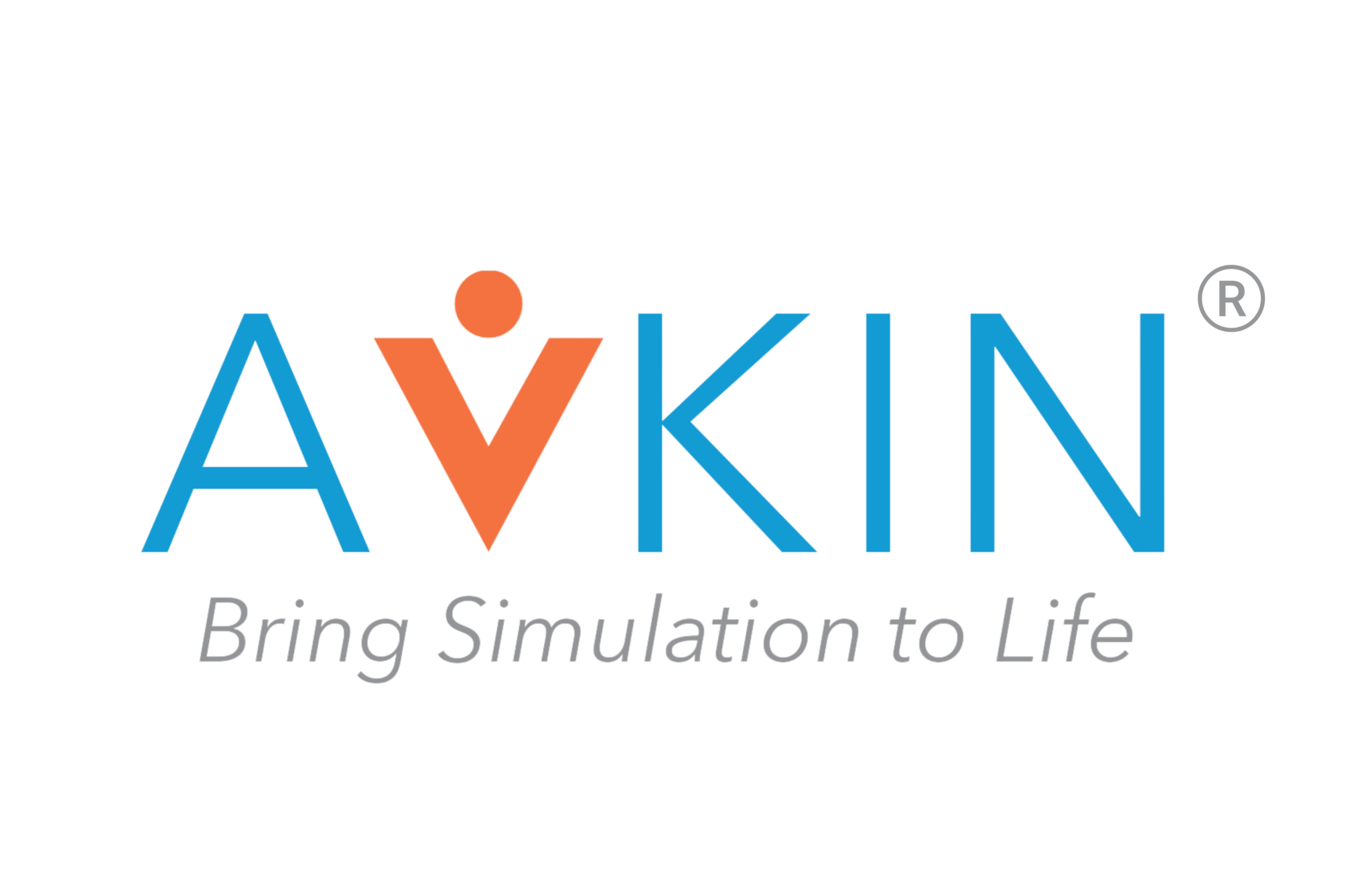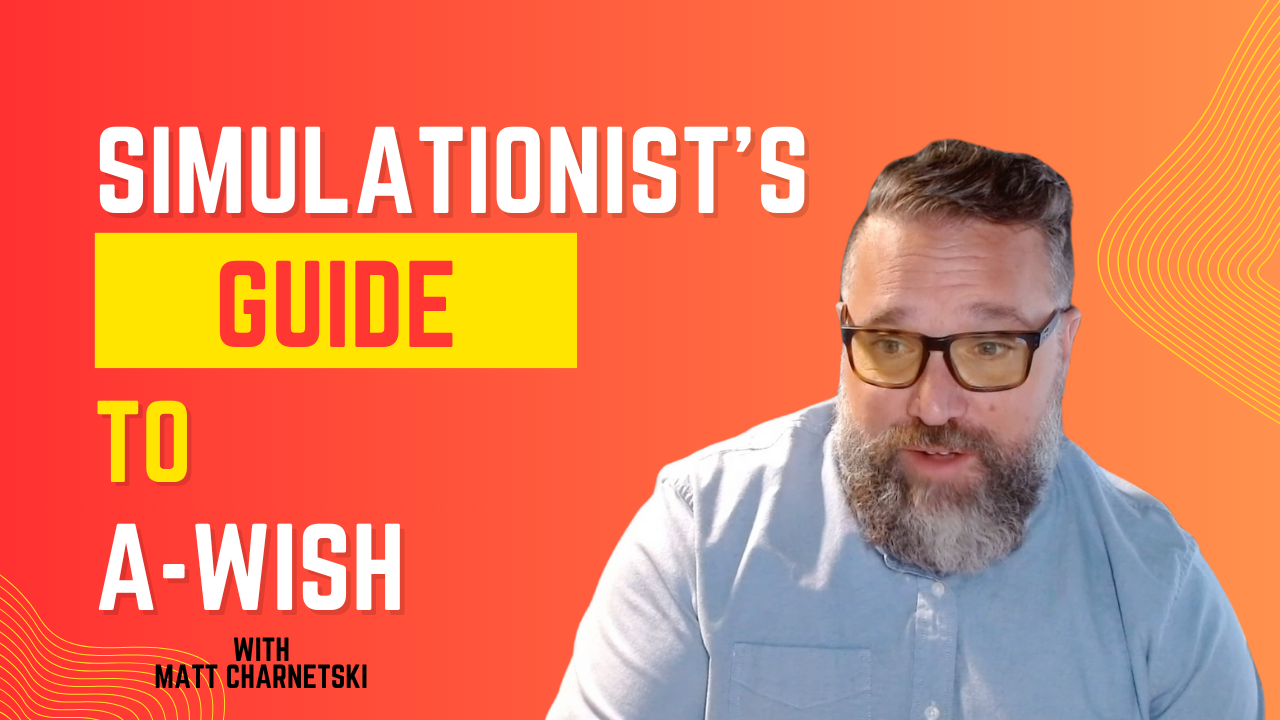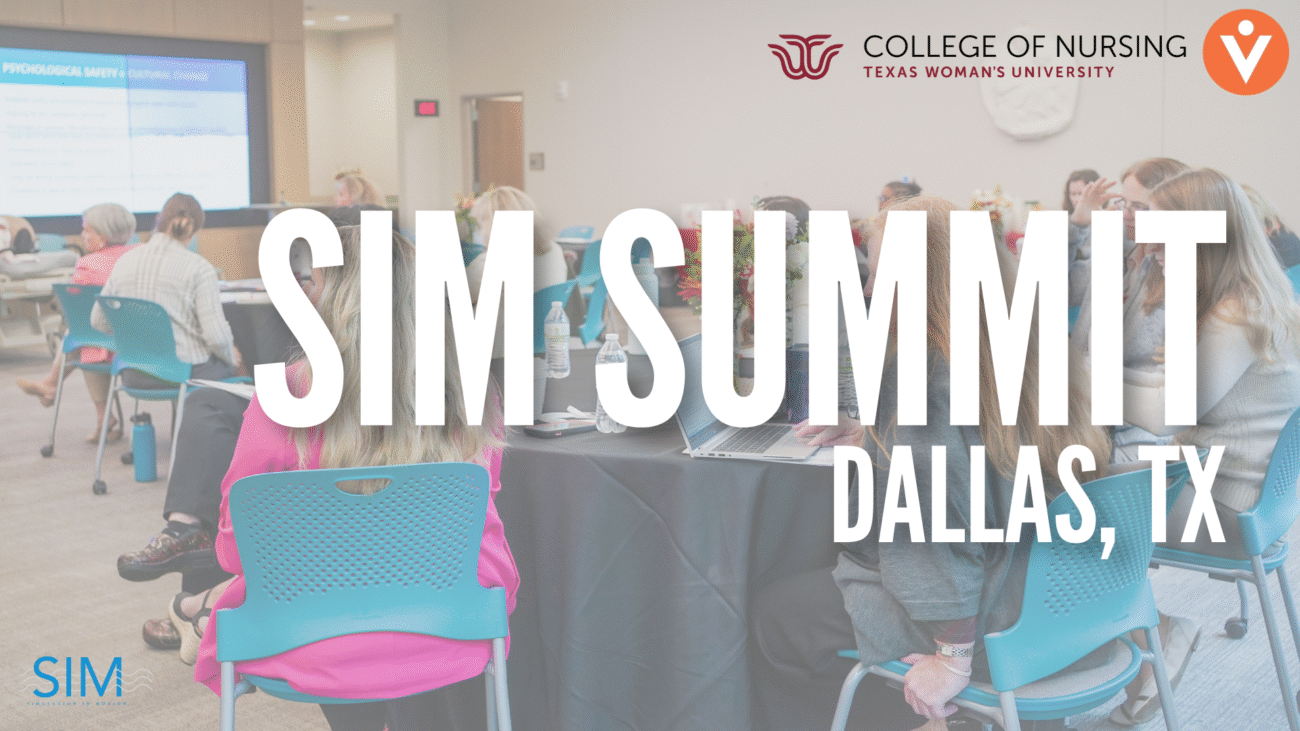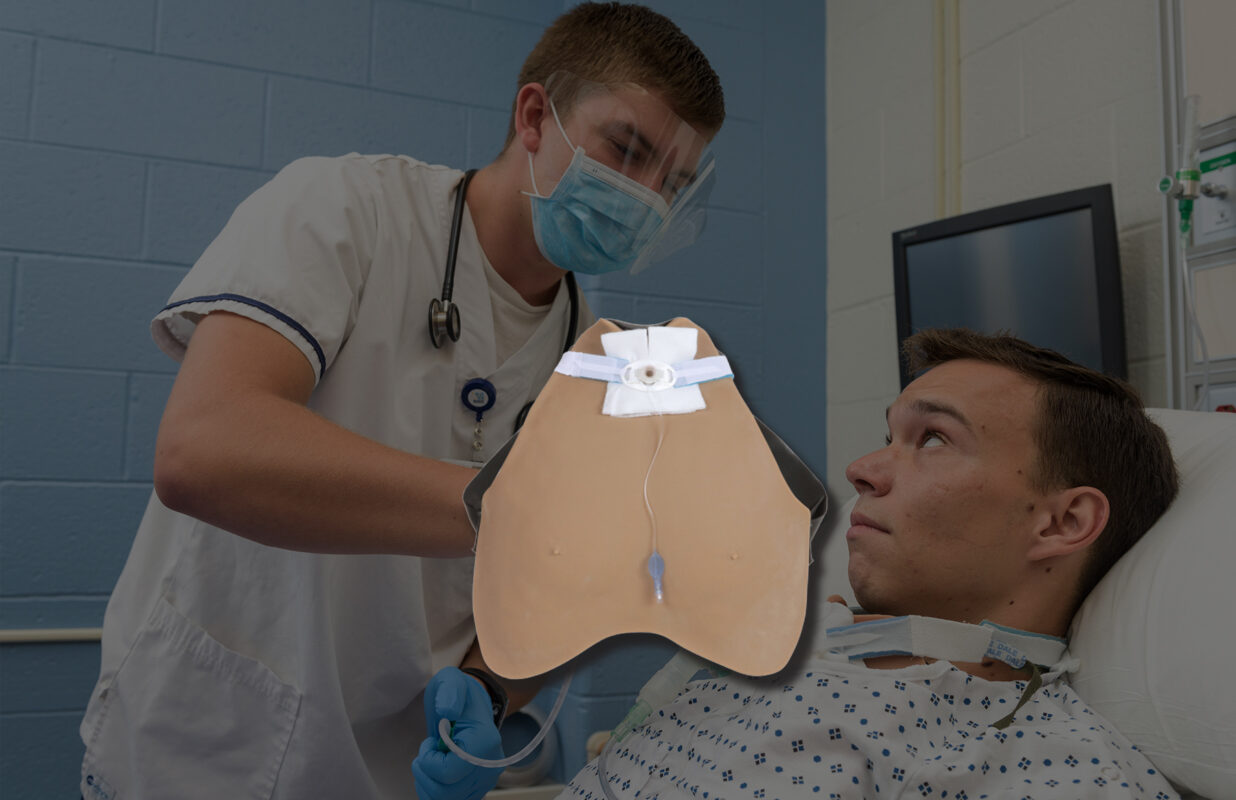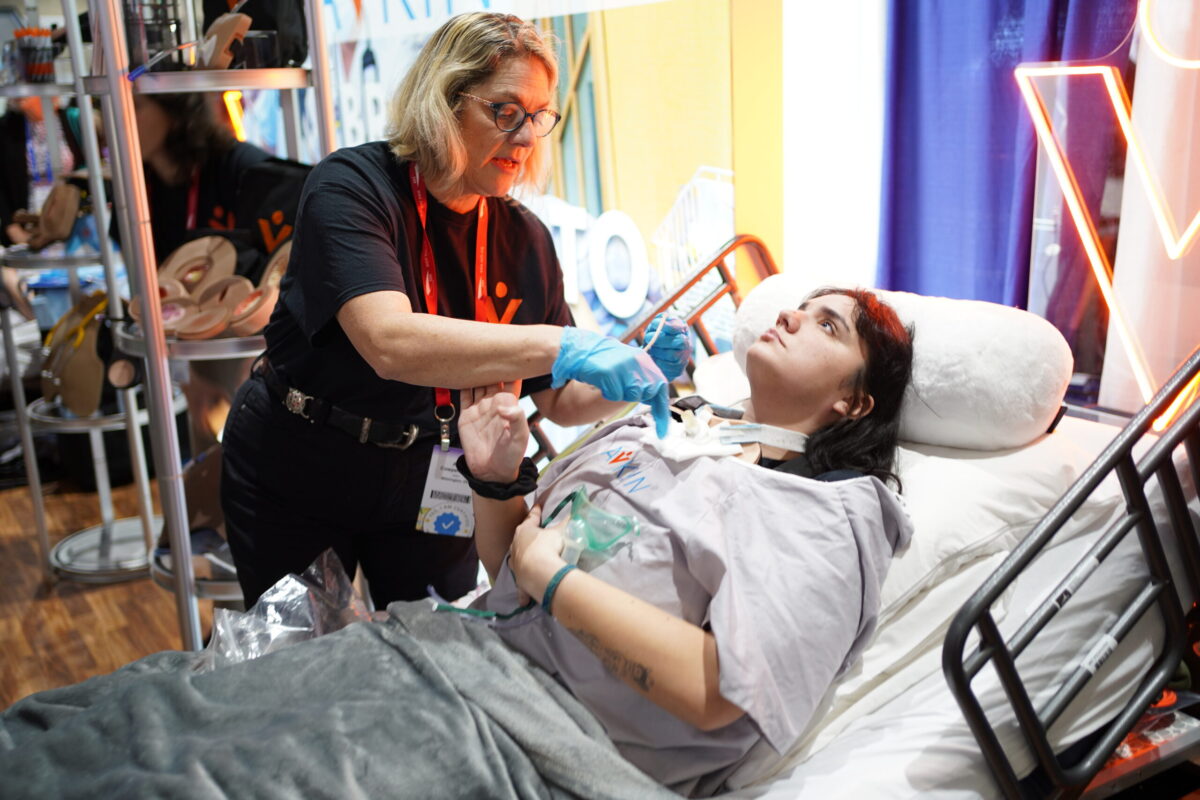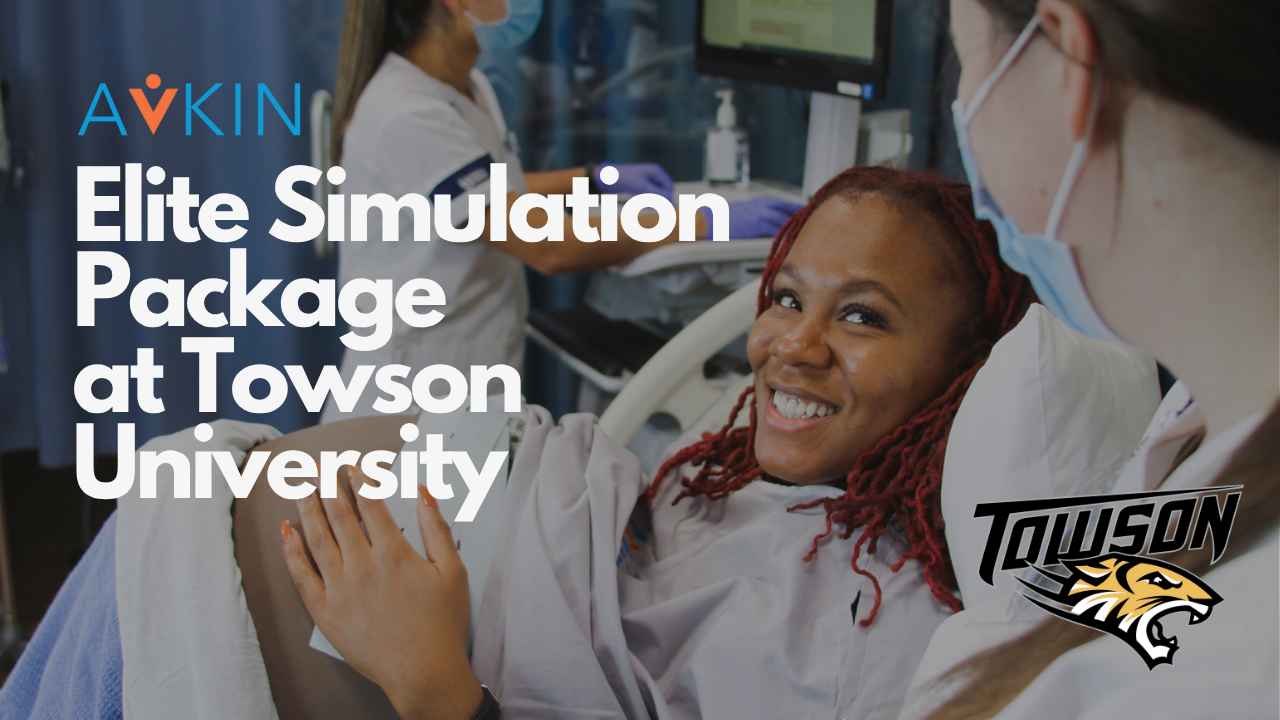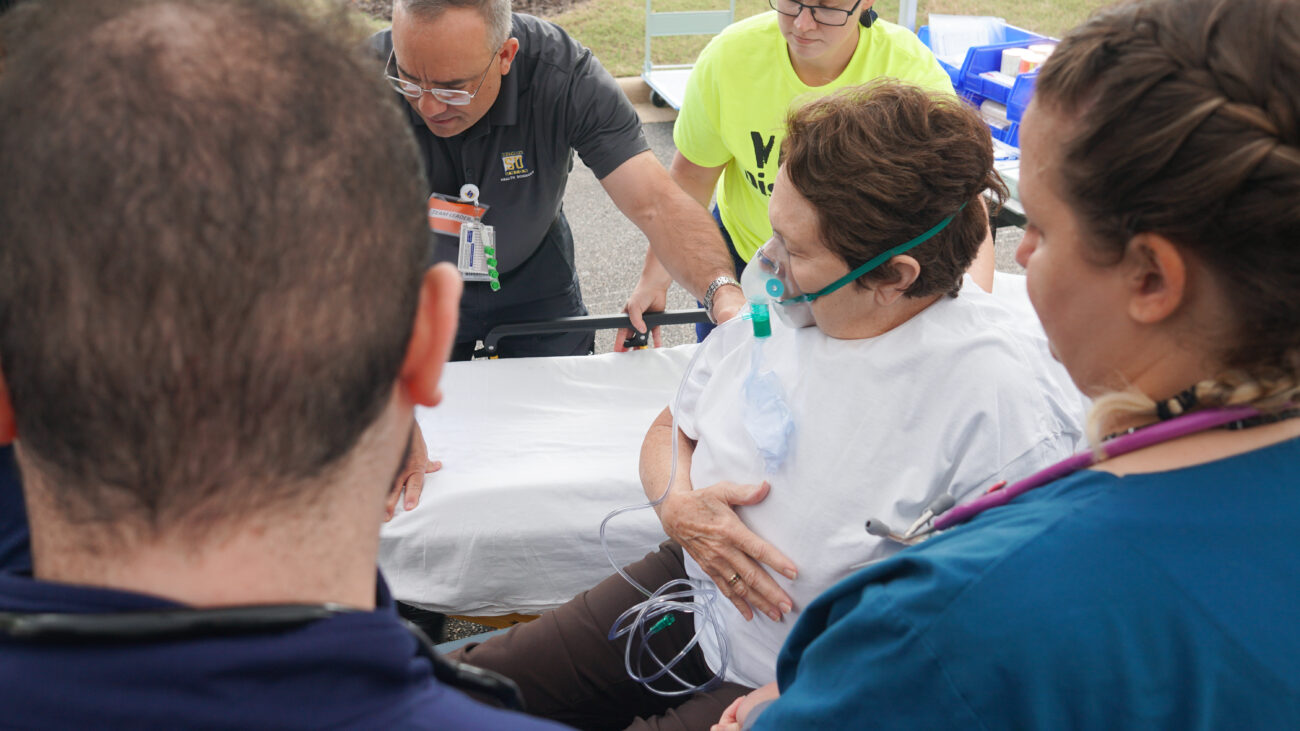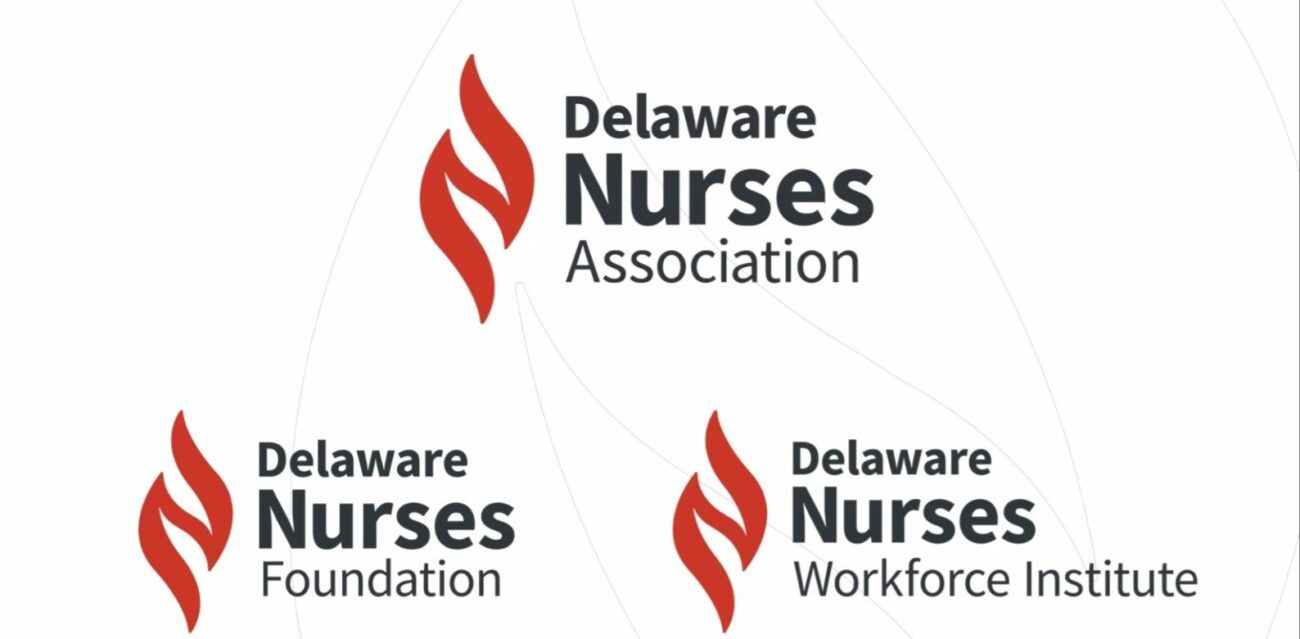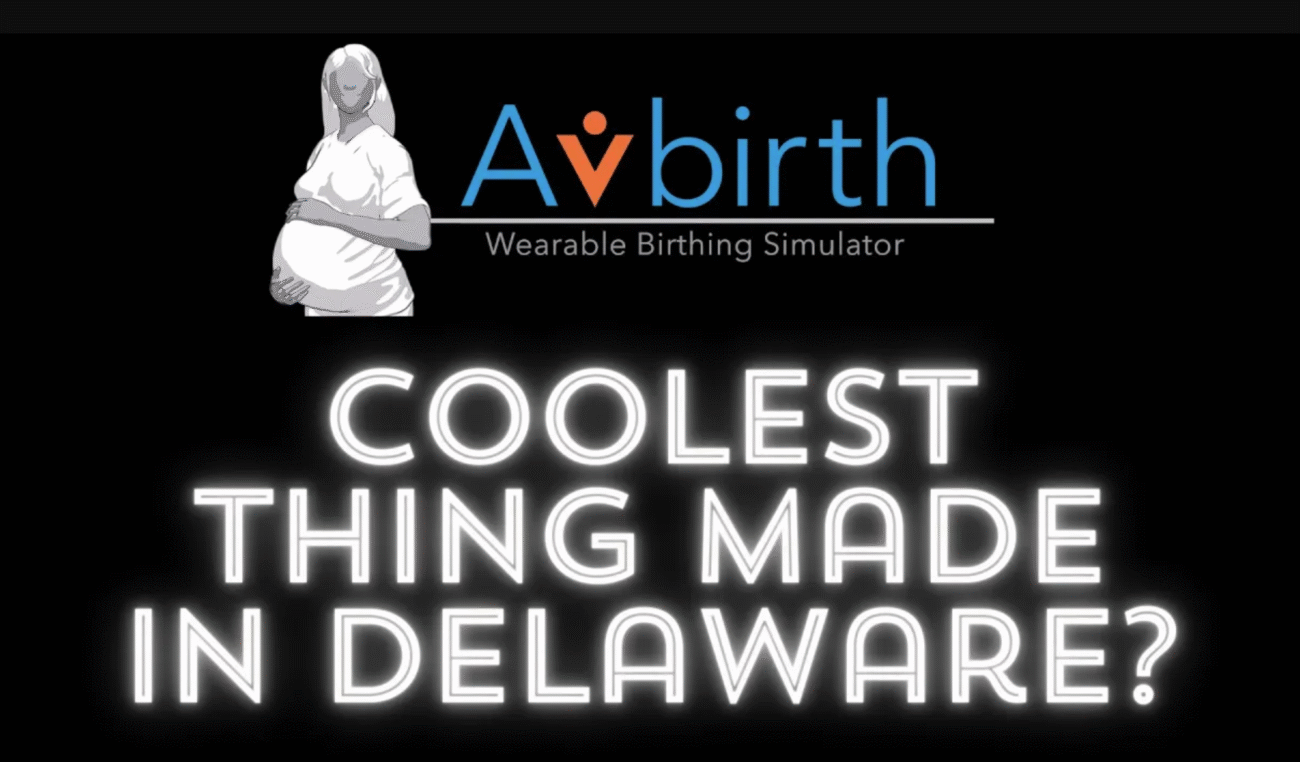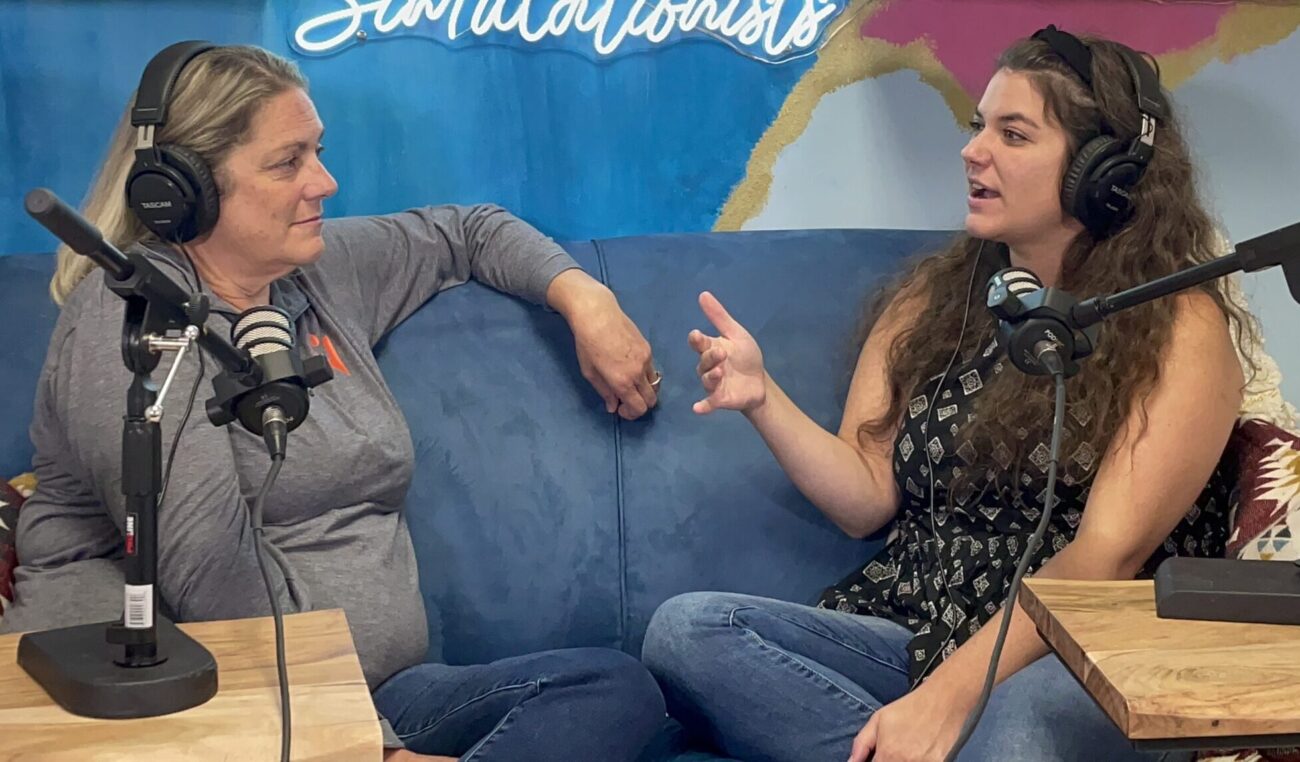Simulationist’s Guide to Boosting Collaboration at an Interdepartmental Simulation Center
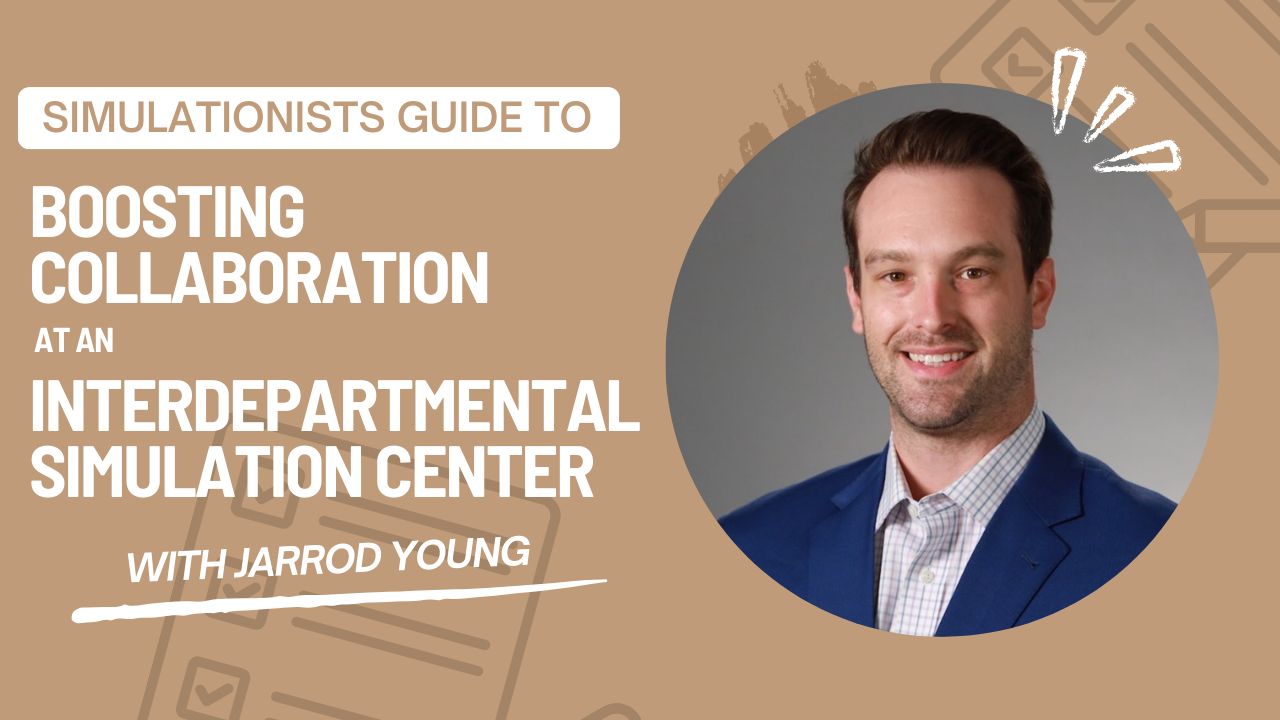
In this episode of Simulation Nation, we welcomed Jarrod Young from the Center for Healthcare Improvement and Patient Simulation (CHIPS) at the University of Tennessee Health Science Center. Jarrod brings a rich background in biomedical engineering and operations, with deep roots in simulation leadership, having earned the prestigious CHSOS-A and serving on the SSH Accreditation Council. His unique path into simulation — beginning in operations rather than clinical education — gives him a fresh and holistic perspective on how simulation centers can thrive through teamwork, structure, and mutual respect.
CHIPS Leads in Interdepartmental Collaboration in Simulation
Jarrod emphasized that interprofessional education (IPE) isn’t as simple as combining learners from multiple disciplines. True IPE, he says, starts with co-designing simulations from the ground up, ensuring every discipline has a seat at the table from the beginning. CHIPS has created a culture where size or influence of a department doesn’t outweigh contribution — all voices are heard, and planning is equitable. Jarrod likens it to a beautifully choreographed dance: complex, intentional, and requiring full buy-in from all involved.
Jarrod also gives a behind-the-scenes look at CHIPS’ strategic scheduling system, which runs two semesters ahead and requires advanced planning from all participating programs. This disciplined structure — along with a dedicated logistics team and simulation educators — ensures simulations are never rushed, learner outcomes are prioritized, and faculty objectives are met. Jarrod spoke candidly about the challenges of enforcing deadlines and developing culture change over time, but the long-term payoff has been a simulation program that runs like a well-oiled machine.
The episode also dove into CHIPS’ participation in piloting SSH’s Human Simulation Accreditation, shedding light on the need for formal recognition of standardized patient (SP) programs. Jarrod helped shape early standards that acknowledge the complexities of working with live humans in simulation. This discussion led to broader reflections on the evolving role of SPs, the importance of respect for their craft, and a recent conversation around terminology — specifically, why the phrase “human simulator” may unintentionally diminish the value SPs bring to education.
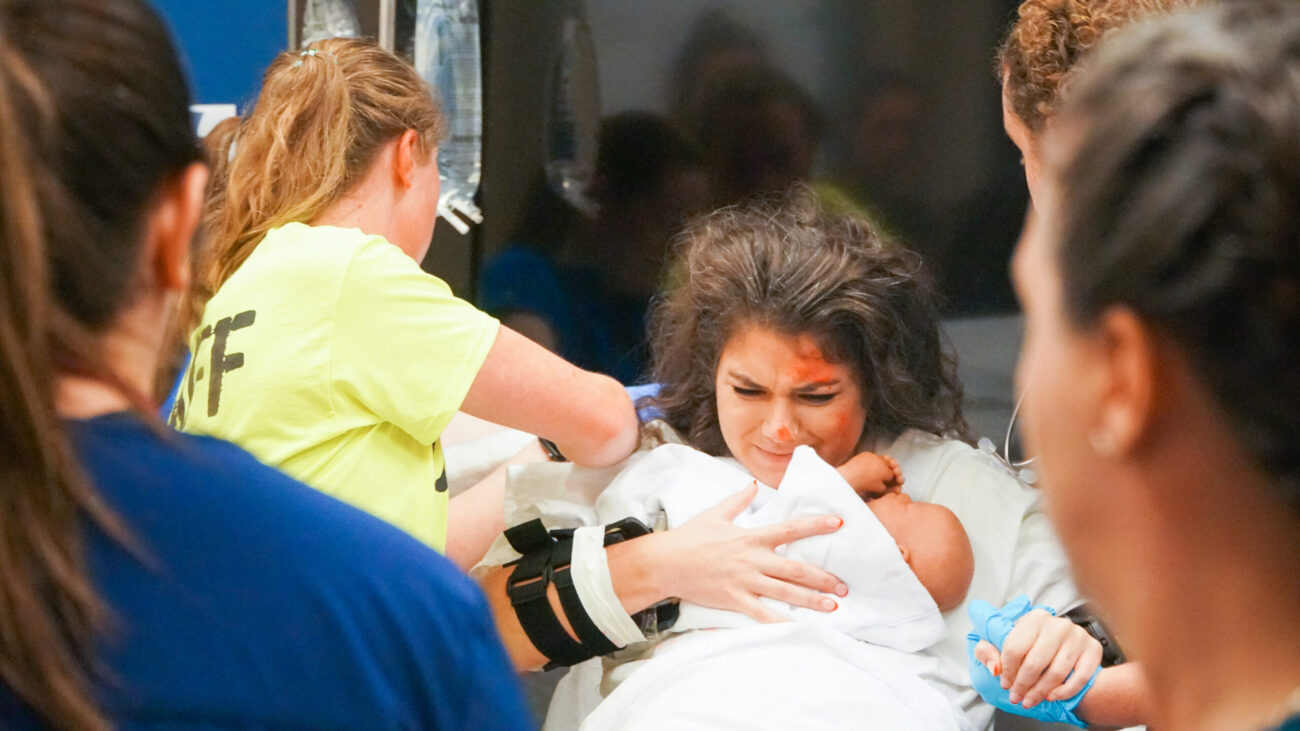
Jarrod closed with an inspiring vision for the future of simulation: one that integrates business-minded professionals into the field, creates measurable value for health systems, and brings simulation out of its educational silo into the broader healthcare ecosystem. Whether you’re in operations, education, SP training, or logistics, this episode highlights how everyone has a vital role to play in simulation’s growth. It’s a must-listen for anyone looking to elevate their simulation program — one thoughtful policy and powerful partnership at a time.
If you enjoyed our guide to Implementing Psychological Safety, check out more episodes of Simulation Nation below, and subscribe to our podcast and Youtube so you never miss an episode!
Full Transcript
Megan (00:11.454)
and we are back with Simulation Nation Season 4 and I am back, had my baby. So now we are back in action here, ready to do some interviews and talk all things simulation. So this episode we interviewed Jared Young at CHIPS, University of Tennessee. we talked a lot about kind of the teamwork and the different roles that went into simulation and honestly he is just a
in terms of all of the different accomplishments and things that he’s done. He’s super involved with SSH. He’s been on the board. He’s gone through their fellowship. He was one of the very first people to go through and get the CHSOSA. So that advanced level, but again he is just accreditation Council on the accreditation Council doing that for other institutions. So in terms of his knowledge of simulation, it is just so well rounded and I think that that’s.
Unique because a lot of times we’re seeing it as people with clinician backgrounds or again kind of come from that sim
education world and then move into it where I feel like for him he’s really been rooted in operations but then has gone forward and done you know kind of the full gamut in terms of looking at the simulation center. and I think that has to do with the legacy of Chad Epps and Teresa Britt that started CHiPs. They really set it up to you know empower everybody evenly and to encourage leadership skills in everybody. So again I think Jared in the interview mentions that he kind of feels
compelled to take that legacy forward. So it’s really nice to see people that are not necessarily healthcare education oriented rise into leadership positions because it’s a different voice, it’s a different brain that’s using this. And again, you’ll hear lots of really cool stuff that he’s done and a really unique perspective, I think, on the simulation world. enjoy this interview with Jared Young. Season four of the Simulation Nation podcast. And this season I have Megan back with me.
Megan (02:13.68)
He’s had a baby and took a little bit of time off. So last year we were, was doing it solo, but welcome back, Megan. Congratulations. you. Today we have Jared Young with us from CHiPs and I’m going to let him give the acronym, but I think it’s the center for interprofessional simulation, healthcare simulation.
Slide the healthcare in there, yeah.
I’m missing the H. Chips is a place that Avkin visited a lot early on as it was just kind of unveiling and unrolling and it is a sight to behold. Their Sim Center is amazing. I think that Jared, you probably would consider yourself blessed to be able to work in such an amazing space.
For sure. Amy, Megan, it’s great to be with y’all. Excited to be here representing CHiPs. Again, we’re incredibly fortunate. We deal with the same issues everybody else does in simulation. So it’s nice to always remember how lucky we are to be in such a great physical space and be surrounded with such a great team. I think that’s the biggest piece of it. But excited to chat more about that today and about the other topics we’re talking about.
So I really come at this from an educator perspective, simulation. And the operations side of things was really kind of different. In the beginning, I was doing everything, right? When we hired someone for the operations portion of it, or at least a part of the operations portion of it, later on after several years. So could you explain to those of us educators that don’t have the benefit of having someone in operations all of the amazing things that you do?
Amy (03:51.486)
Yeah, absolutely. I think when you look at it with that educator hat, right, the operations people get to do all the pieces that I keep the educators up at night, right? So much of simulation was founded out of somebody’s desire interest in building this incredibly hands on, immersive, active learning environment. That meant that people were having to go outside of their faculty roles, their current responsibilities, stay up.
late at night, stay late after they should be leaving to go home and set up the events, prepare for keeping technology up, doing the maintenance piece. Operations allows that magic to just happen so that when the faculty shows up for their events, it’s all done. So really for us, it’s making sure we understand the importance of the technology, understand how to run it, to be able to maintain it as another piece of that.
But then showing the expertise and the ability to show how the technology fits into that educational platform. It’s wonderful to have the most cutting edge piece of technology, but if you don’t know how to best apply it to the educational methodology, the objectives of the case, and that everybody’s not pulling in the same direction, then it’s all for naught anyway. So really kind of building on the importance of
that side of it that it’s more than just somebody setting up the equipment. It’s somebody really knowing the ins and outs of that and how it affects the educational side of things.
I would 100 % agree with that. And I always joke because when we finally did hire SimTech to do the operations portion of it, whenever anything wouldn’t work, like our AV system was down, notoriously at beginning of every semester it was a problem. But whenever she would come in the room and start humming, I knew that my nervous energy was, you know, really being, yeah, was just projecting onto her. And so she was just like zoning me out because I probably was like a flapping chicken running around trying to get things fixed. I fully appreciate what they do. But I think the idea
Megan (05:55.328)
of having someone on the operation side is a luxury for still for many people in the simulation world. So I know obviously CHiPs really adopted that and brought you in to kind of get started with things. How did you get from your biomedical engineering background into simulation? Like what brought you there?
That’s a great question. think, Amy, like so many of us in simulation, you just kind of stumble upon it and you find that it suits you and you’re interested in it. I think for me, I’ve always been kind of a fast paced kind of go-getter personality. Again, biomedical engineering is my background. I graduated from the University of Alabama in Birmingham, knew I wanted to get back there and wanted to be a little more aligned with the clinical side of
Yeah.
Amy (06:45.198)
of my engineering role. I was working for a wonderful program, the Alabama Department of Rehabilitation Services with a wonderful mission to be able to support people with disabilities, engineering initiatives, technology initiatives to be able to help them go to school, go to work, be able to support on that side of things, but knew that there was more I wanted to be able to kind of move forward and do.
And so through a friend of mine, it was actually my wife’s sorority sister at the time, the long connection of it, her brother-in-law worked in simulation and they knew they had an opening coming up. They liked the fact that I was a biomedical engineer and it was just a waiting game. And then I got a call from an incredibly wonderful person who served as my mentor for a long time in Chad Epps. And that was like the perfect match to be able to continue to push me forward in this field.
So what was that like in terms of kind of like a day in and day out working with Chad and Teresa in terms of like, just kind of what that was like. Cause I just think that the few times that we visited Chips and met with them, it’s just like, they were just a powerhouse in terms of, again, their connection. seemed just like they really complimented each other in terms of what that looked like. So I’m just curious to hear from you kind of what was that perspective of being able to kind of learn under, I guess like giants in the space of coming in and working under these incredible people.
Absolutely. You know, moving into a role as the operations lead at the time here at the growing center and CHIP. So was really kind of coming on. I knew that Chad was again, this giant in the field was currently the president for SSH at the time. And then got to meet Teresa and really see how much of a quiet giant she was here, but also in the field was so driven by
But watch by what she knows and we talk about it still all the time now She has read more articles and learned more on simulation education and forgotten it than I’ll ever know And so I think it was it was amazing to learn from her and I think my young youthful Drive to push forward and then her ability to kind of say let’s think about this really was a great yin and yang as we balanced and move forward because I think
Amy (09:10.258)
you know, I’ve even been there to kind of help continue to push her forward and say, Hey, you’ve got a lot here. Continue to get your name out there. And, she’s been, instrumental for, for all of us here and same with Chad, like what they were able to build here, has us still in place where we are today and really able to, to continue to, to continue to push the field forward. And that’s all we can ask for.
I
legacy is honestly what I see it as is they’re they’re able to really kind of again you know him being the president and having such an influence but then also being able to actually be doing this day in and day out I just think it’s a really cool collaboration to see between them.
We joke all the time. Teresa was like the mother of our SIEM group here. But really, mean, they set this culture of this team dynamic and us pushing forward and that still continues today with our team. We’re so supportive of everybody and it’s really helped us work collaboratively and try to break down some of those silos that do exist and really want the best for everybody. they’ve done a fantastic job putting their fingerprints all over the program that’s still here today.
That’s amazing. So Chips was opened officially in 2018, is that right?
Megan (10:56.246)
Yeah, and one of the big, you know, one of the parts of that acronym is interprofessional. you know, I obviously, early on you guys bought some Avakin products. We remember visiting and helping, you know, trying to help get started with integration and things along those lines. And so I just wonder if you could talk a little bit about how you manage such a big, I mean, it’s like eight different programs that you guys do simulation with. How do you manage single discipline simulation, interprofessional simulation? How does all of that work?
obviously schedules, organization, all of those things, but how intentional is the interprofessional simulation and for those programs that are struggling that are even maybe a bit smaller, what advice would you give them on, you know, running interprofessional simulation in a way that doesn’t cause frustration from every discipline that’s there?
Yeah, I would love to sit here and say that we have it all figured out, but we don’t. But we can help people move forward. I think the trouble sometimes is like when you open up a sim center, you push forward for IPE, people just expect that that’s going to happen tomorrow or next month. And that’s not the case. Like so much of this well-developed interprofessional simulation and education is months or sometimes years in the making.
And so I think for us, like we’re in a sweet spot where we’re really kind of a standalone between any one department or program. We’re really a teacher’s best friend and best resource here on campus. So we work in conjunction with faculty. So as they see needs come up in their curriculum, we’re always working as the simulation experts to help design their cases, help be able to, again, support the technical initiatives that they need.
And so a lot of times we’ll always suggest IPE. So if somebody comes forward and says, hey, we’re struggling with this because we are that centralized support, we can say, well, hey, we know that nursing is working on this piece of it or our PA programs working on this or medicine. And so we try to find those intersections where we can. It’s so much of bringing everybody to the table on the front end, having that strong leadership, having a strong process in place to be able to
Amy (13:12.482)
to pull everybody forward. I think the biggest piece is, unfortunately, you know, people say, hey, we want to do this. Let’s throw nursing in, let’s throw medicine in, let’s throw PAN in. And that’s not interprofessional simulation. Having people at that front end of the design and having everybody have that seat at the table is the most important piece. And I think that’s where so many people get it wrong initially is like, you can’t come.
in the bottom of the night and throw somebody into it like everybody has to be there so that they are able to design the sim for their learners in mind because although we have a team dynamic and aspect, we still do have profession specific objectives that we want to hit within that team design. So making sure that everybody feels their needs are met.
Yeah, that’s really good advice. Yeah. How do you run through that from kind of a start to finish situation of having someone come to you guys with an idea or a gap that they’re seeing in terms of you and your team kind of working through that to kind of get to the end result of like the day of simulation?
Yeah, that’s a great question. So again, because we sit outside of any college, we’re unique in that we may get a request from our College of Dentistry the same day that we get a request from our College of Medicine. So really a lot of what we’ve done has been so that everybody has that same equal footing and that the size of your program does not give you some higher level access.
The trump card, right? Yeah. Correct.
Amy (14:41.678)
We don’t want that. And so it’s us setting those processes in place. And so for us, was even leaning back to what we were looking at before we were ever accredited, trying to get to the point that we were going to be SSH accredited as a program. So we were designing with the end in mind, but thinking through all of our stakeholders. And so for us, we schedule on a two-part system, a two-semester system. So…
We’re actually coming up to our semester deadline here in the middle of April. That will be for all simulation events, July 1 through the end of the year. So that gives everybody a one time that you get your request in at that point. And then I’ve got one part of my team that are simulation logisticians that are amazing. They make the calendar flow. They get all of it scheduled. send.
The confirmation is out. deal with all of our prioritization when we do run up with our inevitable conflicts now. And then once that’s set, then it kicks over to Jamie Pitt, who’s our director of education now, and she manages all the SIM designs. So we’re usually three to even five months out if it’s a brand new SP SIM and design. If we’re looking at a mannequin-based simulation, you’re two to three months.
If you’re looking at just setting up a procedural task trainer type event, maybe one to two months just dependent upon time and all that is set. I mean, it was painstaking years and years of getting a culture norm and a shift, but we’ve seen incredible results in the backend that we’re not rushing simulations out, that we’re not seeing negative learner impacts and that we’re making sure that we design it with everybody, that holistic approach of
the learner’s needs are gonna be met, the faculty’s needs are gonna be met, the simulation team’s needs are met, and including in that are standardized and simulated patients, making sure that everybody’s needs are met. So it was a lot of policy, a lot of process, a lot of our team thinking and designing it. And then I think for about a year or two, I got deemed the title of Dr. No here because I had to hold a strong line and…
Amy (16:56.994)
I think out of that we’ve gotten to a culture where people have a better understanding of it, but it’s hard being the person to always hold to that standard process or procedure.
Megan was the Dr. No when we were at the University. was as well. It’s hard. When you were saying an April deadline for anything from July to the end of year, I’m like, my gosh. And I’m like, absolutely, 100%. That’s what it is. And you hold that deadline. So fly by the seat of your pants.
Somebody has to be somebody
Amy (17:34.158)
You work in a constant state of just craziness.
And I try to make everybody else that way too, I think.
It’s the it’s the gift of the dog sitting surrounded by fire like this is fun. It’s all fine. But it’s funny. It’s changed so much like I kind of took on that role of like the logistician and setting the schedule. Then that turned into a full time person taking that position. She grew it so much that now we have two individuals over it and so now we’re even thinking how does it grow further? So we always find ways to continue to better our process and to find other things we need to do.
And I think that’s great to point out too, just in terms of the policy and procedure and how that took time to, again, as a culture develop. But I think that I talk to a lot of people who see it as, these big centers or again, doing a lot of good sim. It just kind of happens organically or it happens with a lot of money or it happens with a lot of support. But I do think that there’s so much of it that it’s like it’s a beautiful crafted dance, but it is a training. It is a process. It is a we all come together and figure out how it’s going to go.
So it doesn’t just happen, right? And I do think that I emphasize that a lot with any consulting that I’ve done for programs is that you still have to have policy and procedure. You still have to have your baselines of what you’re gonna do because just because you get more hires and just because you get more money doesn’t mean that all of the sudden all the pieces are just gonna come together. But I think that it’s…
Megan (19:05.454)
Interesting to hear you say kind of overtime it developed because I think a lot of times people don’t want to let it simmer. They don’t want to let that all happen, but it is. It’s something that you just have to let it go and just continue to do little corrections every semester to make it better. Yeah.
I love the visual, Megan, that you mentioned of like the beautifully crafted dance because it is, I mean, you can have all the money and you’re still not going to fix your problems. You could have all the staff and it’s still not going to fix your problems. It’s a buy-in from leadership. It’s money. It’s facilities. It’s support and professional development for your staff, education for your staff, policies, procedures, governance for your program. It’s all these things that go together.
And then you could know all the right dance steps, but there’s this connection and chemistry that you have to have with your partner for it to even work. so like it all has to blend together in the right mix. And we’ve been lucky to piece a lot of those together. And it is, it takes time, but then every day you got to keep working forward to like chipping away and getting another 1 % better or putting one policy down and like, let’s see how it works. And we’ll revisit it in a month if we need to tweak it.
Two years, three years goes by and you’ve got this wonderful foundation and program that you’ve built.
Yeah, absolutely. And I think it also goes back to what you mentioned earlier with the culture that was set originally from Chad and Teresa of a mutual respect and everyone coming to the table. And again, no one is able to kind of dominate another department based off of size and things like that. But I think that that’s also something that I often can see is missing in other programs where there may not be that same mutual respect or especially in a professional setting. People can come in with previous biases based off different areas and again, kind of be rubbed a little bit the wrong
Megan (20:54.216)
way so that can make it even harder to go through IPE simulation if there already are some you know bias from from previous practice but I think when you can come together and almost have what you guys have in terms of that kind of I almost see it as like the central brain that’s kind of taking in all of the requests working through it all but you guys are able to kind of really filter it out and
I mean, to me it reminds me of Disney World. It’s like we bring the magic and we put it on. You know what mean? It’s like we’re gonna put the performance on and do all the stuff in the background and make it be able to happen. But I think it’s also, my perspective, first of all, you’ve given me, so I’m a part of the AWISH program, so it’s the inter-associational where SSH and Axel and ASP are all working together to get these workforce development, SimOps titles identified, SP educator and SP. And then now you’ve…
identified a logistician and I’m like, that’s a whole nother. Add that in. Add that one to the group, right? But amazing that you had that opportunity. But I also think when there’s imbalance in power dynamics, think healthcare providers at least.
my world and I don’t probably should speak specifically to people but by and large it’s kind of tyranny of the urgent. So it’s like hey let’s just patch this together let’s throw it together but what when you have this policies and procedures when you have some ops in place saying that’s not the way to do this well and you have someone to help guide and direct that I think that that’s what really leads to the outcomes that you’re looking for and it slows things down just a bit. You know I think that that we always like we’re having a problem with this
and clinical, let’s fix it with quick, let’s just do this rather than like, no wait, let’s meet, let’s talk, should this be an interprofessional sim, let’s go through the process of establishing a new simulation. So I do think that there is something to be said for that. And I will say that Chad was amazing in the fact that there was never a power imbalance between him and even with Jared, working with you, he just was always on the same level as everybody else and just wanted to hear and respond to that.
Megan (22:57.597)
I think that is a good first start, definitely for CHIP.
Yeah, I mean, we always talk about it. I mean, it’s really a flat hierarchy. I there always has to be a hierarchy on paper and that makes sense. so, you know, he really set that tone and he wanted the buy in, right? Like he was at the time kind of the giant, go-to person that everybody looked to, especially as we were building it out. Like we’ve been, couldn’t be lucky before I even got here in 2016 at UT, they had been working two, three, maybe even four years.
of bringing in stakeholders and really planning and designing what this would look like. While to your point, Amy, like simulation was still going on. So they weren’t trying to just patch things at the time. Like there’s some small patches, but then they were planning this, this long-term plan, bring in a great builder, a great planner and Chad. And I think his biggest strength was not the knowledge he had in the field, but his ability to support others in their role and build them up and have them.
challenge what they know, continue to build it and move it forward. you know, without that, we would not have been successful, you know, after him leaving, we were able to continue to kind of piece it together. We’ve gone through leadership changes at a high level at our university, we’ve gone through leadership changes in our program. And we’ve been really lucky to have great leaders and still to this day do, but we wouldn’t have been able to support that time had he not built that into an entire team.
of trying to be the best version of yourself in your role and lead from where you are and the leadership not just being held with one person.
Megan (24:36.778)
So you mentioned Jamie, who’s now the Director of Education at CHIPS, correct? And I know she started off as your SP educator fairly early on. And recently you guys went through the human simulation accreditation through SSH, just like a pilot, right? You were one of the pilot groups. Do you mind giving us a little quick peek behind the curtain of what that was like and what was different about that than, let’s say, the general accreditation?
that people would go.
Yeah, absolutely. So again, this has been something that even predates my joining the SSH Accreditation Council, but something that was kind of always kind of churning in the background and just being able to continue to kind of move forward. It was a good time. I’m always a go-getter and doer. So when the ideas come up, like let’s approach it. I’ve been incredibly fortunate to work with Jamie. Before I got here at CHIPS, you know, had never been…
Close enough to a SP program that I ever was able to see it firsthand of my original program. It was separate So I’ve learned everything that I’ve learned from from Jamie And so that has been an incredible wealth to have her here and be able to kind of understand and see and we’ve had a lot of conversations every time especially as she was getting ready to move forward into the director role of she had never done
mannequin sim and you know procedural sim and all this and I told her I mean just my opinion alone like when you’ve had to design and develop sim with another human in mind it makes it much easier because that mannequin’s not going to tell you or respond that they’re frustrated that they’re stressed they’re overwhelmed that there’s too much to learn you push that button and they’ll come right back on the next day and they’re at a hundred percent provided you charge the battery but
Megan (26:23.741)
for the answer to a question.
Amy (26:32.814)
There are not these other factors in play. And so I said, you’ve already had to think from another level to be able to do that. And so really for us, from the SSH side, as we looked at piloting and bringing these standards forward, it was not an accreditation of a modality, but it was rather an importance of capturing the program level importance of being able to support this initiative.
Within SP education and human simulation, there is a wealth of consideration, policies and procedures, training of your standardized patients, being able to help keep them equipped and developed, having them de-roll, de-escalate. There’s so many nuances that these incredible educators and the people that run standardized patient programs have to go through that is just not the same.
as a mannequin-based simulation program, and that doesn’t belittle the work that a mannequin program would go through. It just wants to shed light on the importance and the differences of that side of simulation methodology. And so if we’re going to be looking at a full program accreditation, there was enough…
specialized work within this field that it felt right to figure out how do we continue to work and move forward to bring to light the great programs and the great people that are putting on these educational efforts. And so we were lucky to be able to be one of the first pilots to go through to continue to kind of chart and set the standards. We’ve been able to continue to revitalize. I think we’re now to our fourth version of our standards.
We’re going through a pilot with five or six more programs this spring with every plan to have this open to other programs to apply by July. So again, it really just focuses on that full holistic program approach to what it takes to be able to support from the initial ask of a faculty to you implementing and then going through the data.
Amy (28:47.79)
and quality improvement of putting on SP education events.
And what I would say there, one of the biggest things that I learned when we went through just the initial accreditation at our center is the beauty in going through this is that you get support from experts in the industry to say these are the things that you could do to improve your program. So if you need to make a case to your leadership, if you need to make a case to your donors or things along those lines of these are the things that we could do to make even simulation even better, you get that support, right? You have a pair of objectives.
or several eyes, looking at what you’re doing and saying, how can we support you? I can remember Penny Watts saying that to us. Like, how can we support you at doing what you’re doing better, right? What are the things that we can advocate to help you with? Because as a simulationist, you’re the ones that are in the trenches, you know, man, we could really use another SimOps person or something along those lines, right? And so I think that rather than to see it kind of as something that would make you nervous, it is lifting the covers and looking underneath, but it is doing it in a way that is supportive
the program to improve what they’re doing, know, the amazing work that they’re already doing, but to make it even better, right? I think that that was to me the biggest takeaway is, was like, wow, you’re here to help me, not just like evaluate what we’re doing, you’re here to help? So I do think that’s amazing.
I’m glad you said that Amy, because I do. think, you know, there’s so many times people think that your program has to be a certain size. You have to be a mega center to be able to go forward and be accredited. That’s just not the case. They think that you have to have every single problem and anything, you know, all issues solved. That’s not the case, right? Like we’re looking to make sure that you’ve got a great foundation that you are working towards a set of plans.
Amy (30:39.362)
procedures, policies for how you operate and manage your program, but it’s okay to not be perfect. There is no perfect program out there. And like you said, the great part of it is you get these outside voices to be able to come in and say, this is an amazing thing you’re doing. You should go share this at IMSH, at SimGhost, at ASPI, at Anaxel, or hey,
I see where you’re going. I’ve been there five years ago. Let me tell you ways that I’ve been able to help overcome that struggle or to your point, Amy, like you can go to the institutional leadership and just be that outside voice to say everything that they’re saying is correct. Like you need to be able to continue to support and build that forward. so through the accreditation council, the last few years we worked on a
perceived return on investment of SSH accreditation, really trying to focus on some of those great stories and some of the great wins that programs have had as they move forward through accreditation and just really focus on getting that out there and helping people know like, yes, it is that you’re meeting a mark and that you have a great program, but it also is a way to help continue to push you forward and make you better.
Yeah.
Agreed. And I really appreciate with the human simulation accreditation side where again, being in simulation from, you know, 2015, it’s just like there was never any rules for anything, right? It was like everyone was just doing whatever they could do with what made sense. And then as time has gone on, we’ve gotten standards, we’ve gotten accreditation, we’ve got credentialing, like all of these things have developed over time, but it does start to give some boundaries and some rules around why we do the things we do, because I feel like with the standardized patient side of things,
Megan (32:29.392)
for so long we are taking from theater. It was like, okay, well, this is what theater does. Theater does de-rolling. So we’re gonna start to implement de-rolling. Okay, theater does dress rehearsals. We’re gonna start doing dress rehearsals. Like we were always kind of pulling from that world. And I really appreciate that now inside of simulation, we’re kind of starting to own some of these.
Procedures policies things like that that theater has been doing but then crafting them because it’s different, know I say all the time that’s like just because you’re an actor Doesn’t mean you’re a standardized patient and just because you’re a standardized patient doesn’t mean you’re an actor. They’re two different worlds with two different expectations. I remember early on When we were working closely with theater and they were like referring to simulation as in like
And then the standardized patient gets up and takes a bow at the end of the simulation for the audience. It’s like, no, no, no, it’s very different. That’s not what we’re doing here. Like, we’re not doing it for the round of applause. We’re not doing it for the laughter. We’re doing it for the education content. it’s like, you know, and so I feel like now being able to have some sort of
I guess like accreditation to be able to send people through or kind of as a reference guide, it’s also helpful to make it so that you’re starting to validate some of these concepts of what we’ve been doing to say, well, no, you can go back to that. You can look at that. This is why, this is how, things along those lines. it kind of just, again, just further validates the work that goes into when you’re using an SP inside a simulation. Yeah, and would- ahead. No, you go ahead.
I think, you know, there’s been incredible work done through the ASPE standards of best practice, the Inaxil healthcare simulation standards of best practice that really hone in on the educational methodology and the delivery of how we do simulation. What I really love about accreditation, and this may even be my own bias because I’m not an educator or a clinician by training, but I love the full program approach.
Amy (34:23.277)
where we should all strive to bring on the ASPE, the ENACS, or whatever standards of best practice in the education that we deliver. But for me, accreditation, it pulls the full team in and how you manage and you’re able to kind of validate how that educational opportunity unfolds in front of the learners there, how you support it from a full picture.
And it really, think, again, as somebody that came up through operations, it brings to light the importance of a full team, right? Back to where Amy even started with this earlier of, you know, your Sim Techs, your AV specialists, they all play this important role and they may not be front stage, but they are that stage manager, that stage hand that makes sure that the spotlight shines on the star.
at the right moment, right? And then make sure that the audio kicks on at the right time. So it’s the appreciation of how we all fit into this. And at the end of the day, it’s about providing the best educational outcome for the learners that come through so that they can support us or our families in the worst time that we would have, right? We wanna be able to have that comfort that we’re gonna be taking care of to the best of a provider’s ability.
Absolutely. Would you mind talking a little bit about the SSH fellowship? I know you were a fellow, what, in 2023? Is that right?
Take your word for it, that sounds like the right thing.
Jarrod (35:53.87)
Yeah.
I think that’s what I read, but do you want to talk a little bit about who should apply for the SSH fellowship? I went through the National League for Nursing Sim Leadership Group, and that was life-changing for me, both personally and professionally. But a little bit of, again, I’ve never been an SSH fellow, but could you talk a little bit about your experience with that?
It’s been great. think, you know, I was lucky. think in 2023, we had four, maybe even five different, what I would call operations people, people that built their careers and came up through simulation operations. So I think in a lot of ways that was kind of somewhat of a changing of the guard at times, right? Like it may seem like this kind of.
a group that maybe one would never think they could aspire to. But I think from being on that side of it, the people that I’ve run into, all the other fellows, they’re so generous with their time. They want to share their experiences with people. And I think it’s been able to show over the last few years that it’s there for anybody that is a simulationist. It’s there for the people that aspire to continue to push this field forward.
And just like all of us in simulation, we come from different backgrounds. We all specialize in different things. We push the field forward in different ways. And I love that it’s an appreciation of the very backgrounds, the very experience that people have, but it really just exists for the people that are doing great work, making great change and continue to want to do that, right? Like it’s not some hall of fame. You put your plaque up there, but it’s a recognition of wanting to continue to pass that baton on. And I think for me,
Amy (37:35.596)
I’ve always again, you been driven by getting to be front row firsthand to see how Chad was continuing to operate and move forward. And so in some ways it felt like, hey, I want to continue to do that for other people. I want to be able to continue to push and drive forward, but to bring others along with me to mentor, to support, to have zoom calls with people that ask questions, to share as much as I can.
so I just love the ability now that there’s so many fellows that we’re looking at doing these masters courses and doing, you know, these couch sessions and being able for people to really share their experiences. Like the world of podcasting here, like simulation nation, has been incredibly helpful because it brings, some of these figures that we may be afraid to approach.
not including me, I am not that person, but some of these other people that may be tough to ever walk up to, you can bring them into listening or being able to see them on the screen and it gives a little more confidence to approach people and know that this is a really small community full of people that want to help and want to share their experiences with other people.
I’m so glad you mentioned that because I feel like we talked about that a lot too where it’s just we’ve run into so many people so in the early days of afkin we did a lot of workshops of kind of just going around doing presentations going in the next school doing presentations and Along our journeys. It was just that we met so many different people and you know people like you know Susie carden egren and running and working with Kim Leighton and and Teresa Gore and Just all these different people that again were just so Pivotal in their early days of simulant just pioneering the field
And I do feel like a lot of times with people who are getting started, they can get intimidated by different names of schools. know, people like UMass and things along those lines, right? It feels intimidating to go up. But I think that just every time we’ve ever had experiences, people are just so giving inside of the simulation community and giving of their time, giving of their expertise. And there really has never been, I don’t think anyone we’ve come across that isn’t just…
Megan (39:47.18)
fantastic in terms of them just being like, yeah, let’s sit down, let’s chat, let’s talk shop, really.
Yeah, still tears me up a little bit when I start talking about it because from my perspective, I was getting my master’s degree and I was quoting these people over and over again. Barry Eisenberg, Susie Cardine-Eggren, all these people that were, know, Kim Leighton. And then like you meet them and they’re people and they just want to talk to you. And I always tell our sales team, if you read an article and you’re impressed by what they said, email the author and tell them that you appreciate their work because it is their life’s passion for them to do it. you know, getting an email from somebody saying, hey, I love
what you’re doing, I’m really interested. That’s an honor to us. It’s not, you’re not bothering, you know, people that have done that. And I think that the simulation community is very unique in that, about how giving they are. I will say that.
I agree with you. And I think it’s funny, all the names that you throw out are people that have done the same thing. Like the fact that I get to like, you know, when I was on the board last year, set next to Kim Layton and it’s like, whoa, this is, this is awesome. Like let’s work on a project together. from being there, I’ve been able to have even just one-on-one discussions with, Barry Eisenberg. And every time that he gives me a moment of his time, I’m like, thank you so much. But if you want these people.
Correct. I mean, I’ve worked with so many great people. I’ve worked directly with Penny Watts as well. I’ve seen so many of these people. I’ve been able to go and be able to support the efforts of Suzy Carden-Eggren through MGH and some of the work that… I just always, I think my biggest thing for the people out there that are, how do I get there? How do I get to fellowship? How do I meet these people? Just say yes. I had no idea and maybe it was overconfidence. Maybe it was just a lack of…
Amy (41:33.282)
I just said, yes, I volunteered for everything. Some things I got turned down for and that’s okay. But just say yes, volunteer, do great work to Amy’s point. Show appreciation and what you learn from it. And more often than not, people are gonna be incredibly receptive and potentially even ask you to help on their next paper or project or ask you for ideas.
And I think that sometimes there can be kind of an imposter syndrome when you don’t have that clinical background or necessarily like come from that world because I know I felt that way of coming in and it’s like no I’m the serinized patient person, know, like I’m not the sim person. I’m not the educator. I’m not the clinical person, right? But like you were saying earlier, it’s like but I’m still a valuable part in this moving the industry forward, right? I’m a unique voice and for me specifically it’s hard because you know, my background was I was the serinized patient. I wasn’t the serinized patient educator. I was the actual
Yeah.
Megan (42:28.162)
patient. And so having someone who was actually the standardized patient staying in the field consistently and again making it their life’s work, that’s not super common. So I remember for me even going into going up for my Chessy, I had to like write in and be like, hey, I don’t have a background in this. I’m the standardized patient educator. Like, is this right? And again, it was kind of one of those like, absolutely, we’d love to have you still fill this out. We’ll go through this process, but
Again, I also wanna encourage anyone who’s listening, who is on the operation side or the standardized patient side or the logistics side or whatever it is, you can still be super involved in this world. You just have to keep coming forward. And like you said, I’ve really never faced a lot of rejection in terms of people being like, no, no, no, that’s not you, right? I think that there is such a mutual respect in this world and people wanna bring in different people from different areas. So.
Again, if you are questioning if you belong based off your background, just know that if you’re passionate about SIM and you want to get involved, more than likely people are going to wrap their arms around you and bring you in and you’re just going to be part of the group just like everybody else. Join SIMGOS, join ASPE. They will find a committee for you to be on for sure.
Yeah, and I think it is. It’s taking leadership ownership role from whatever role you’re in and then continuing to learn about other roles as well. I think it’s funny you said that Megan like, we, you know, as an SP coming forward, I think we’ve probably had five or six SPs we have now hired on into full roles because it’s an interesting.
peek behind the curtain into a world that most people don’t know exists. And so we’ve hired standardized patients on as our logistician. We’ve hired them on as our SP educators. We’ve hired them on in operations roles. We’ve moved people from within operations to education, to logistics, to educate. We’ve moved people around so much because it’s, you know, we always look for
Amy (44:28.512)
just really an attitude and ability to fit in, to grow, learn, to want, to know more. And then if you have people that have that hunger and that desire, again, the information, the people, the resources are out there. If you join up and become a member of these societies, there’s so much information out there to be able to learn that you find where your role is or where you best fit. And you can really move forward and be honestly, whoever you want within simulation.
Amy (45:29.036)
Yeah, that’s a really loaded question. Everybody always asks and I really do. think I’ll try to be as simple with it as I can, but I always get very long-winded. So I really think over the next 10 years, especially operations specifically, it’s continuing to lean on the different backgrounds and expertise levels that people bring in.
We’ve got this great approach for handling the equipment, the mannequins, the tech side of things. And that’s great. That’s wonderful. Bringing those people forward even more now into the educational design piece of this, right? Like designing our simulations with the capabilities of the mannequin, the technology to make the most holistic, well-rounded approach to a simulation. But to me, the next 10 years is how do we get outside of our little bubble of simulation?
and we get into the real world because that’s where the biggest push is going to come and where we can make the biggest impact. So to me, it’s whether it’s operations, whether it’s building up this logistical side, the administration side of it, it’s building up the business side, being able to take data and analytics that we have and make our use case pitch because we know unfortunately as important as simulation is, it is a every five to seven years, another.
investment in capital and the equipment, the resources that keep coming up. And for some places that’s hard to really be able to see and to be able to grasp. But if we can take, yes, it’s this cost, but here’s our impact. Here’s the downstream impact. Here’s what it does to true patient care and safety and quality in a hospital. That’s the impact that we have to get. We have to be able to get to the people within business, the people that have their
their hands on the wallet on the purse strings of a program to really be able to continue to support it. I I think there’s been great work done the last few years through all of the submissions through a simulation and health care journal and all the other journals that are out there of the research people are doing. You know, again, SSH accreditation has the systems integration arm where it really looks at.
Amy (47:45.056)
simulation integrated to within a hospital’s quality and risk management and safety departments. Some of those tangible data metrics coming out then is doing what we know, tying the educational piece to the downstream effects of what we’re doing is important because so many times we were like, well, I’m just in.
an academic center, I can’t really see does this impact or not. Yes, you can. You can tangibly make those connections by the people that are implementing this with the current practitioners, current clinicians, seeing this immediate impact at the bedside or in their quality offices, reduction of any medical errors, whatever they’re tying it to even.
as small as, as simple as like CLABSI rates or any line infection. You can tangibly take that and be able to kind of magnify that out over anybody’s well-formed simulation program and development. And I think that’s the nice piece. And what we’re trying to really be able to push forward through accreditation is if we have accredited programs doing this with the same set of standards, the same setup, we should in theory be able to help them make that jump to that final.
that final push. So to me, think the educational piece will continue to grow and develop and we’ve got a great foothold there. My hope for the next 10 years kind of parallels outside of the field to how do we convince and show the great data, the metrics, the impact that we know to the people that have no idea who we are, right? Like it’s almost like going to Shark Tank to be able to make sure people continue to support this, whether this is financially or whether it’s through some of the governmental initiatives.
And some of the pushes that we want to see continue to happen for integrating simulation into the curricular needs of different college programs.
Megan (49:41.509)
And I think it takes a really unique…
personality or viewpoint of it to see it in that way. Cause I have heard that more and more, especially I remember Lance Bailey was talking about this recently, but like it does take that brain because I know for your background, like that is not your sweet spot at all in terms of being like, all right, let’s think about this from a business side. And I don’t think that that’s often in terms of the healthcare side that they turn around and say, okay, let’s look at this from that business angle or let’s look at that from, you know, the ROI things along those lines. Right. But I do think the more now that we have different people and personalities coming into this space of simulation,
they can see it from that viewpoint. And again, kind of that same advocacy of saying, hey, we’ve got to start really looking at what this means downstream to get the backing that it needs. Because we hear it so often of people coming up and saying, you I got a grant for a million dollars to get started, but I have no budget. I have no working budget. have not, you know, and so then they don’t have the ability to continue or grow or, know, honestly do good SIM really at the end of the day. But I do think as that business side continues to develop then.
There will be that opportunity for people who did just kind of get that one cash infusion to be able to advocate for what budget is going to look like going.
Yeah, I’m so glad you said that to me because it really is right like the last 10 years or even the 10 years before that it was so this field was driven by the clinicians, the people that were coming through and they made incredible waves in founding this field. But it was again the kind of for us by us there of what we know we need as an educator that has been set and it’s still growing, still developing.
Amy (51:16.686)
We have to be able to get outside of it. So how do we bring people in whether that’s through an operational lens or You know, there are a few clinicians out there that are amazing on the business side I’m lucky to be able to work for one in our executive director now, dr. Tara Lemoine That’s an amazing clinician and businesswoman she’s able to really think through all sides of it Like how do we continue to get out there and I’ve learned a ton from
from her of how we move this forward. But we’ve to be able to get out there. And so it’s welcoming those people in that have that business background, the MBA. Like where do we see that we can help teach them simulation, but they can teach us how to do a successful elevator pitch or a business approach to how we get this supported.
I remember like having to write a strategic plan for the first time as we started Avkin and I was so overwhelmed. Now I could do it very easily, right? But I think that it’s like because as clinicians we don’t typically have the opportunity to take business classes or even think with that business mind, right? That you really have to stretch yourself beyond that. So having people that have that expertise, that passion, that can do it for you and assist you in thinking through things is again a huge relief to me, least personally.
Well, thank you so much, Jared, for joining us. I appreciate your time and all that you do to help simulation and move it forward. again, I think really put a stake in the ground for the SimOps. mean, there’s so many amazing people that are part of that SimOps team. But all of the work that you’re doing with SSH and the accreditation council, we appreciate all your time and energies to make simulation what it is today.
Absolutely. Well, thank you all for having me. It’s been an absolute pleasure to just be able to chat with you all and be real about simulations.
Megan (53:08.93)
Yeah, if we’re ever in Memphis, we’ll stop by and see you. Yeah. Absolutely. Thanks. Bye.
Hopefully soon. Thank you all.
Thank you, Jared, for everything you have shared today. Again, we really appreciate getting that unique perspective in terms of operations in the simulation world, but not just operations, honestly. mean, he does it all, so we really can’t limit him to operations, because it is the full gamut in terms of what him and Jamie are doing there at CHiPs. And again, it’s just honestly, I think it’s just so incredible and honestly unique, where I think that a lot of programs try to figure out how to bring all of these different people together and have it as a well-crafted dancer. Again, I kind of see it as like an orchestra, having all of the
different pieces playing to make it sound beautiful. And I don’t think that’s common. And I think that, again, it comes from a lot of healthy and mutual respect for one another, respecting differences, recognizing strengths, being able to kind of have everyone come together with that. But I do think that they are kind of a very unique Simcenter in terms of how well they work together with all of the different pieces and being able to kind of get that.
together.
Megan (54:12.174)
moving forward, orchestrated, and bringing in all of the voices to hear what they have to say. Yeah, so speaking of voices, you recently had a LinkedIn post that went a little viral. We’re gonna go hot topics here, hot topics and simulations. Let’s talk about it a little bit. I honestly was not expecting this to be…
I honestly thought it was going to be like hundred people are going to see this and we were just kind of going to go out. Like I did not think that this was going to be a big So what happened was it was brought to my attention that it is becoming more common for the term human simulator to start to be referred to in replace of serinitis patient. I’m not sure where this transition started. I know that SSH came out with the term human simulation, which is kind
of identifying that this is kind of the term for the modality because again we’ve had a lot of conflict in terms of sterilized patients, simulated participants, simulated patient like the gamut goes on and on and on so I think that they were trying to come up with what is the overarching umbrella term that they can use for the modality of human simulation.
They came out with that.
And then recently there has been the term of how do I recruit human simulators? How do I train human simulators? How do I schedule human simulators? And I think that this comes from a place of not working or being a seronized patient. So.
Jarrod (55:37.314)
working.
Megan (55:41.898)
I also feel like there’s a gap right now in simulation where there’s not a lot of people who have been the role of the standardized patient that stay inside of SIM. I feel like oftentimes they kind of move on, they go to the next thing and they’re not necessarily brought to the table as that respected voice to say, how would you like to be called or what do you identify? Like things like that. There’s not the same sense of ownership. There’s not even an association for standardized patients. Exactly. association for standardized patient educators, but there is no association for standardized patients. So they really don’t have a seat at the table. Yes.
the educators have not done the standardized patient role for years, right? And so a lot of times they come in as the educator, but they haven’t necessarily done it unless they’re just like filling in. And I will say there’s a very big difference between as an educator if you’re filling in for SIM versus like…
This is your passion and this is what you do. Well, it’s also power dynamics differences as well, would say. Agreed. So I really wanted to kind of speak out as someone whose background is a standardized patient. Like I identify much stronger with the term standardized patient than standardized patient educator. Like I feel way more of like I’m like, no, that was how I started.
Those.
They paid money to be a standardized patient currently. contact me. I would love to do some sim again. you were honestly, I just would. Can’t even tell you how badly I would love to go back and do some sim. She misses it very much. But I really identify with that very strongly. So I wanted to put this out there on LinkedIn because I just wanted people to hear and understand that using the term human simulator, referring to me as a human simulator, feels very degrading in terms of it being like you are just a tool.
Megan (57:16.61)
that I’m using. You are just here to lay in bed, read the lines I’ve told you to read, and do what I’ve told you to do, and thank you, you can go now. And that’s all we need from you. And I want there to be an understanding that being a seronized patient is an art. There’s a lot that goes into it. There’s a lot that goes into preparing for it. And there is a level of respect, of understanding that I am trained. I know what I’m doing.
I’ve worked at this and again, I’m coming into it from a perspective of somebody who has strong talents and abilities in that area and I’m going forward. And I just think that again, when you start to dehumanize humans and kind of again, classify it as they’re a simulator or they’re, you know, a tool to be used, it really then starts to devalue what they’re bringing to the table. And I just wanted to make sure that that was known from a perspective of
the seronized patient because I don’t think that we often hear from them, nor do I think that a seronized patient is often in the role long enough for you to really, for them to have strong opinions. But as someone who’s gone around, gone to conferences, done workshops, speaking engagements, done consulting, I really have seen the full gamut of what it is and I do think that it is important to have that voice represented in terms of that. Now, I do want to specify because there were some just questions in terms of this, but.
I’m not saying that the standardized patient is more important than the educator. I’m not saying that the standardized patient should be treated as an all-knowing person and they don’t need coaching. But like we discussed even in this episode with Jared, there is a healthy dynamic of respecting what the standardized patient role is, respecting what the educator’s role is. And if there is a healthy dynamic between the two, there’s a mutual respect of who takes over when and where and making sure that it’s accurate.
I will say that a lot of times, I am gonna go in a little bit on a soapbox here, but in terms of the earpieces and things like that, I do feel like because that is so integrated, I feel like there is a concept that it’s like, you’re a warm body in bed and I’m gonna speak through your mouth and you don’t get to take it on and kind of do it yourself. And I think that again, what happens there is it’s a lack of training that then occurs because they’re relying on earpieces and things along those lines rather than.
Megan (59:35.798)
training up the standardized patient to go into that simulation and trust them not to go rogue in the simulation experience. Yeah, well I will say, mean, working with hundreds, at least hundreds of standardized patients, if not thousands of standardized patients, because we had new standardized patients every semester, and we had about 30 of them, that it is a matter of setting boundaries, right? And so there is ways to do it. I promise it is not that you have, you know,
I mean, again, if you have rogue SPs and you’ve tried to train them and they’re not trainable, then you to them move on because they’re not doing their role. But I do think the comments that you made on that LinkedIn post are really important for people to consider because it is dehumanizing. And the issue that I’ve always had with the mannequins is that they aren’t humans, right? So we want to, the humanity is what you want to bring out in the simulations because…
people are so complex and you’re meeting people in healthcare at the worst days of their lives. so helping them, having SPs help the students to understand that in a safe environment and get feedback, again, not more important than the education that goes in with by any means, but they are a part of the education. They should contribute to the questions that they, you know, they should be allowed to ask questions of the character and who they are because it’s gonna make for a better simulation in the long run.
I know you weren’t anticipating it to go viral, I do think that that that the seat at the table or voice to be heard is really important for people to be considering. And I will say that I really did appreciate the openness to hear the perspective and again it did really encourage me in the fact that people were saying like I never thought of this before I’ve never considered this before and I do think that that’s really telling of our our industry that people are not pushing back and saying well what about you know I think that a
of people are saying, OK, that’s the perspective of the standardized patient. I’m not trying to insinuate.
Megan (01:01:35.224)
harm or I’m not trying to insinuate disrespect or whatever it is. And so thank you for that perspective and we can move on. But I think that there is that element of, again, similar to what we talked about here, but an openness to understanding all perspectives and going forward. And again, as long as there’s that healthy respect and understanding of all areas and who contributes to simulation, I think we’re on a really good path in terms of where the industry can go to. Yeah, and that’s pretty much what we talked about with Jared. I know. It all ties back, right? It all ties in. So that’s great. All right, everyone. Well, thank you so much for joining us
on this episode, it’s been great chatting with you and we’ll see you on the next one. Bye bye.
